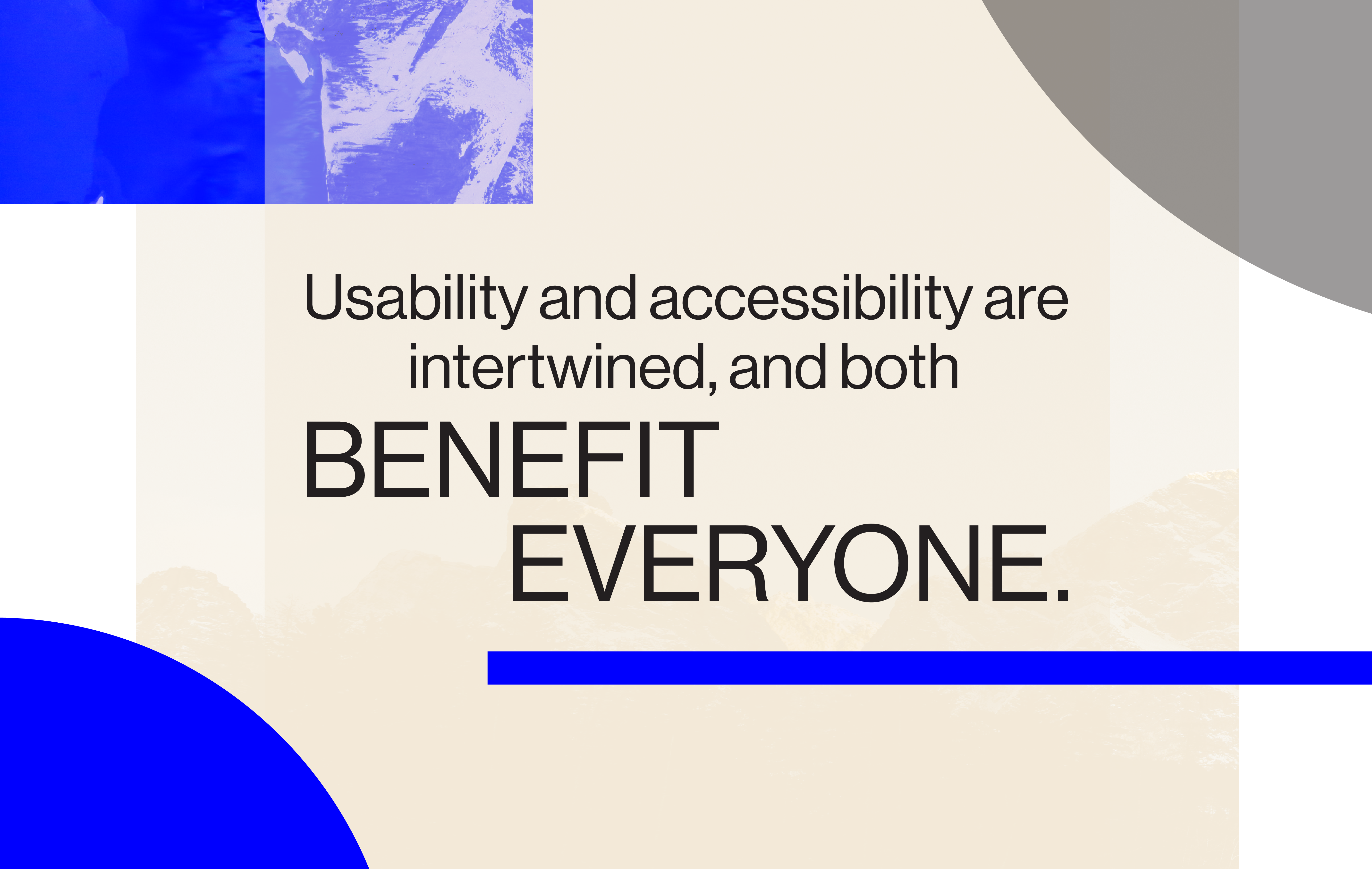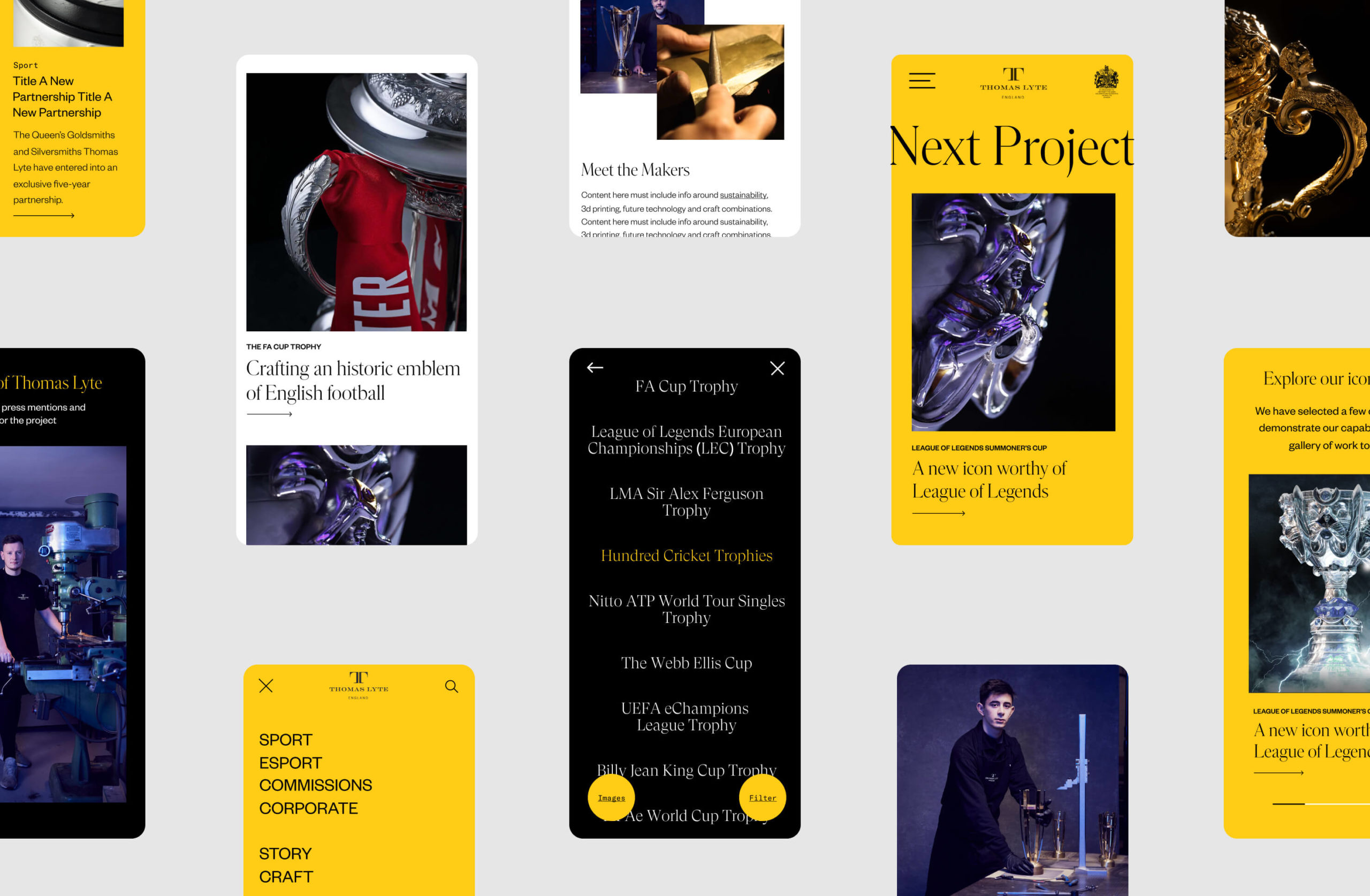Deep focus
Why inclusive design makes for outstanding websites

Websites are undoubtedly a crucial touchpoint for businesses and individuals particularly in today’s always connected digital landscape, and accessibility in this digital landscape is no longer a bonus feature of your website, it’s essential.
Making sure accessibility is considered throughout your website means not excluding anyone from a global audience with potential to interact with it. By fostering this inclusivity, it naturally enhances the user experience for everyone, and ultimately broadens the reach of your website. At Deep, we pride ourselves on considering accessibility in every website project for the following reasons:
Embracing inclusivity
Designing for accessibility is more than making the website usable by people with disabilities. It involves making the website as usable as possible for as many users as possible. This can mean ensuring the website is responsive on multiple devices and works for users with slow internet speeds as well as ensuring colour contrasts are high, fonts are legible and alt tags are in place. Catering to a broader audience will reflect well on your wider branding as well, reflecting on your brand’s inclusive ethics and beliefs.
Enhancing user experience
Accessibility and user experience (UX) go hand in hand. Designing with accessibility in mind creates websites that are more intuitive, user-friendly and engaging, which results in improved satisfaction, lower bounce rates, longer average visit durations and ultimately improved conversion rates. Considering features such as clear navigation, logical content structures and using established website design patterns and principles can improve the user experience dramatically, whether they identify as disabled or not. Usability and accessibility are intertwined, and both benefit everyone.
SEO and search engine friendliness
Accessibility and search engine optimisation (SEO) are closely linked. Many accessibility practices align with SEO best practice, such as using descriptive headings, creating alternative text for images and meaningful text on links. This also includes non-text based accessibility practices as well, such as optimising for colour blindness and making sure contrasts are high. Websites which don’t follow accessibility best practice can be penalised, so not only are you reaching a smaller audience, you may be excluding some of the smaller audience you eventually reach.
Legal and ethical obligations
Beyond the ethics of making your website accessible, there are legal obligations to consider. Many countries have laws and regulations in place that require websites to be accessible; in the UK, all websites in the public sector created after 23 September 2018 have to meet accessibility standards and have an accessibility statement available. Complying with these regulations helps in avoiding any legal ramifications, and so prioritising accessibility from the outset saves time, effort and resources in retrofitting accessibility standards into your website later on.

Tapping into a larger market
Accessible website design allows your website to reach often underserved markets. The World Health Organization estimates that approximately 16% of the global population lives with some form of disability – the equivalent of 1 in 6 people. With this in mind, ensuring your website has been optimised for accessibility, you could be expanding your reach and potential customer base. Aside from it being the right thing to do, it’s also a smart business move.
Future proofing your website
Prioritising accessibility in your website helps to future-proof it in the ever-changing digital landscape. As technology evolves, accessible websites will perform much better, being more adaptable and resilient that websites that haven’t considered accessibility. By focusing on inclusive design practices, your website will stand strong in the face of new platforms, devices and assistive technologies.
Digital proofing your brand
Brand guidelines don’t always align with accessibility best practices, and in these cases it’s an opportunity to review these overlooked areas of your brand. For example, luxury brand subtleties and colour palettes may look beautiful in print, but adapting them for digital platforms can be challenging without compromising inclusivity and therefore website performance. Consider your brand’s digital presence from the outset, or review and refine it to ensure it’s performing optimally at all brand touchpoints. By harmonising brand and accessibility principles, you’ll create an effective and inclusive online experience.
In summary
Creating accessible websites is a commitment to inclusivity, user experience and ethical business practices that can only positively impact your website. If you’re unsure if your website is meeting accessibility standards get in touch.


